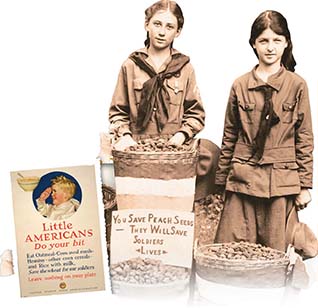SECTION 2: The Home Front
WITNESS HISTORY  AUDIO
AUDIO
Supporting the War
While soldiers trained to fight in the war, Americans on the home front supported the war by working in war industries, lending money to the government, and conserving food to feed the troops abroad.
“Perhaps it will not be long before we will read each day long lists of American boys killed or wounded in the trenches of France. There will be boys in those lists that you know, boys that I know. And as our eyes film over with tears it will be at least some comfort to us to be able to say, ‘I am helping too. I am saving food for the boys who are fighting.’”
—Committee on Public Information bulletin, July 1917
Objectives
- Analyze how the American government mobilized the public to support the war effort.
- Describe opposition to the war.
- Outline significant social changes that occurred during the war.
Terms and People
- Selective Service Act
- Bernard Baruch
- CPI
- George Creel
- conscientious objector
- Espionage Act
- Great Migration
NoteTaking
Reading Skill: Summarize As you read, summarize the key points made in the section in a chart like the one below.

Why It Matters Before the war, the federal government played a minor role in the daily lives of most Americans. But during World War I, the government assumed new powers. It regulated industrial and agricultural production, worked to shape public opinion, and established a new military draft. While war required sacrifice, it also brought new economic opportunities and many Americans migrated to other parts of the country in search of these opportunities. The war permanently changed Americans’ relationship with their government. Section Focus Question: How did the war affect Americans at home?
America Mobilizes for War
War affects many things, but its greatest impact is on the lives of ordinary people. People fight, sacrifice, and sometimes die in war. People work to produce the food that soldiers eat and the guns that soldiers fire. People shape the information that others receive about the war. War may be the result of conflicts between nations, but it touches the lives of millions of individuals.
Building an Army
When the United States entered World War I, the United States Army was only a fraction of the size of European armies. To build the army, President Wilson encouraged Americans to volunteer for service and pushed Congress to pass the Selective Service Act. The act, which Congress passed in May 1917, authorized a draft of young men for military service in Europe. On the





